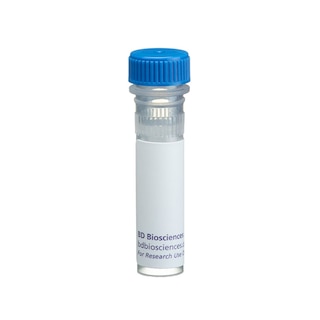-
Reagents
- Flow Cytometry Reagents
-
Western Blotting and Molecular Reagents
- Immunoassay Reagents
-
Single-Cell Multiomics Reagents
- BD® OMICS-Guard Sample Preservation Buffer
- BD® AbSeq Assay
- BD® Single-Cell Multiplexing Kit
- BD Rhapsody™ ATAC-Seq Assays
- BD Rhapsody™ Whole Transcriptome Analysis (WTA) Amplification Kit
- BD Rhapsody™ TCR/BCR Next Multiomic Assays
- BD Rhapsody™ Targeted mRNA Kits
- BD Rhapsody™ Accessory Kits
- BD® OMICS-One Protein Panels
-
Functional Assays
-
Microscopy and Imaging Reagents
-
Cell Preparation and Separation Reagents
-
Training
- Flow Cytometry Basic Training
-
Product-Based Training
- FACSAria Product Based Training
- FACSMelody Product-Based Training
- FACSLyric Product-Based Training
- FACSCanto Product-Based Training
- LSRFortessa Product-Based Training
- FACSymphony Product-Based Training
- FACSDuet Product-Based Training
- HTS Product-Based Training
- BD FACSDiscover™ S8 Cell Sorter Product Training
-
Advanced Training
-
- BD® OMICS-Guard Sample Preservation Buffer
- BD® AbSeq Assay
- BD® Single-Cell Multiplexing Kit
- BD Rhapsody™ ATAC-Seq Assays
- BD Rhapsody™ Whole Transcriptome Analysis (WTA) Amplification Kit
- BD Rhapsody™ TCR/BCR Next Multiomic Assays
- BD Rhapsody™ Targeted mRNA Kits
- BD Rhapsody™ Accessory Kits
- BD® OMICS-One Protein Panels
-
- FACSAria Product Based Training
- FACSMelody Product-Based Training
- FACSLyric Product-Based Training
- FACSCanto Product-Based Training
- LSRFortessa Product-Based Training
- FACSymphony Product-Based Training
- FACSDuet Product-Based Training
- HTS Product-Based Training
- BD FACSDiscover™ S8 Cell Sorter Product Training
- Singapore (English)
-
Change country/language
Old Browser
This page has been recently translated and is available in French now.
Looks like you're visiting us from United States.
Would you like to stay on the current country site or be switched to your country?
BD Transduction Laboratories™ Protein Tyrosine Phosphatase (PTP) Sampler Kit




IP: nat = native condition, den = denaturing conditions
This kit includes 10 µg of each antibody listed at a concentration of 250 µg/ml. No substitutions allowed.

Each antibody has been tested on an appropriate positive control lysate (see table).


BD Transduction Laboratories™ Protein Tyrosine Phosphatase (PTP) Sampler Kit

BD Transduction Laboratories™ Protein Tyrosine Phosphatase (PTP) Sampler Kit

Regulatory Status Legend
Any use of products other than the permitted use without the express written authorization of Becton, Dickinson and Company is strictly prohibited.
Product Details
Description
Protein tyrosine phosphatases (PTPs) regulate Tyr phosphorylation during cellular events such as proliferation, cell signaling, and oncogenic transformation. PTPs have at least one Tyr phosphatase domain containing an 11-residue sequence motif in which Arg and Cys residues are required for catalytic activtiy. This family can be subdivided into two groups, receptor and non-receptor PTPs. The receptor PTPs are transmembrane proteins with two phosphatase domains in the intracellular region and a variety of motifs in the extracellular region. Some receptor PTPs (CD45, RPTPα and RPTPβ) are heavily glycosylated in their extracellular domain. RPTPα and RPTPβ are expressed in the nervous system where they are important for initiation of signaling that regulates Tyr phosphorylation. CD45 dephosphorylates both lck and fyn in T cells and has been implicated in antigen receptor-induced responses in both T and B cells. LAR, another receptor PTP, contains three Ig-like and eight fibronectin type III-like domains similar to some neuronal cell adhesion molecules. These extracellular domains of LAR may promote cell-cell interactions that activate phosphatase domains important for axon pathfinding. Non-receptor PTPs, such as PTP1B, C, and D, contain SH2 domains for interaction with phosphotyrosine residues on Tyr receptor-like proteins, such as SHPS-1 and SIRPα1. SHPS-1 and SIRPα1 recruit phosphatases that regulate signal transduction pathways activated by growth factors, cytokines, or cell adhesion molecules. Other non-receptor PTPs such as KAP, VHR, and MKP2 may dephosphorylate cyclin dependent kinases or MAP kinases. Thus, PTPs function in the regulation of Tyr phosphorylation of proteins found in a diverse array of signaling pathways.
Preparation And Storage
Recommended Assay Procedures
Western blot: Please refer to http://www.bdbiosciences.com/pharmingen/protocols/Western_Blotting.shtml
Product Notices
- Since applications vary, each investigator should titrate the reagent to obtain optimal results.
- Please refer to www.bdbiosciences.com/us/s/resources for technical protocols.
- Caution: Sodium azide yields highly toxic hydrazoic acid under acidic conditions. Dilute azide compounds in running water before discarding to avoid accumulation of potentially explosive deposits in plumbing.
- Source of all serum proteins is from USDA inspected abattoirs located in the United States.
Please refer to Support Documents for Quality Certificates
Global - Refer to manufacturer's instructions for use and related User Manuals and Technical data sheets before using this products as described
Comparisons, where applicable, are made against older BD Technology, manual methods or are general performance claims. Comparisons are not made against non-BD technologies, unless otherwise noted.
For Research Use Only. Not for use in diagnostic or therapeutic procedures.
